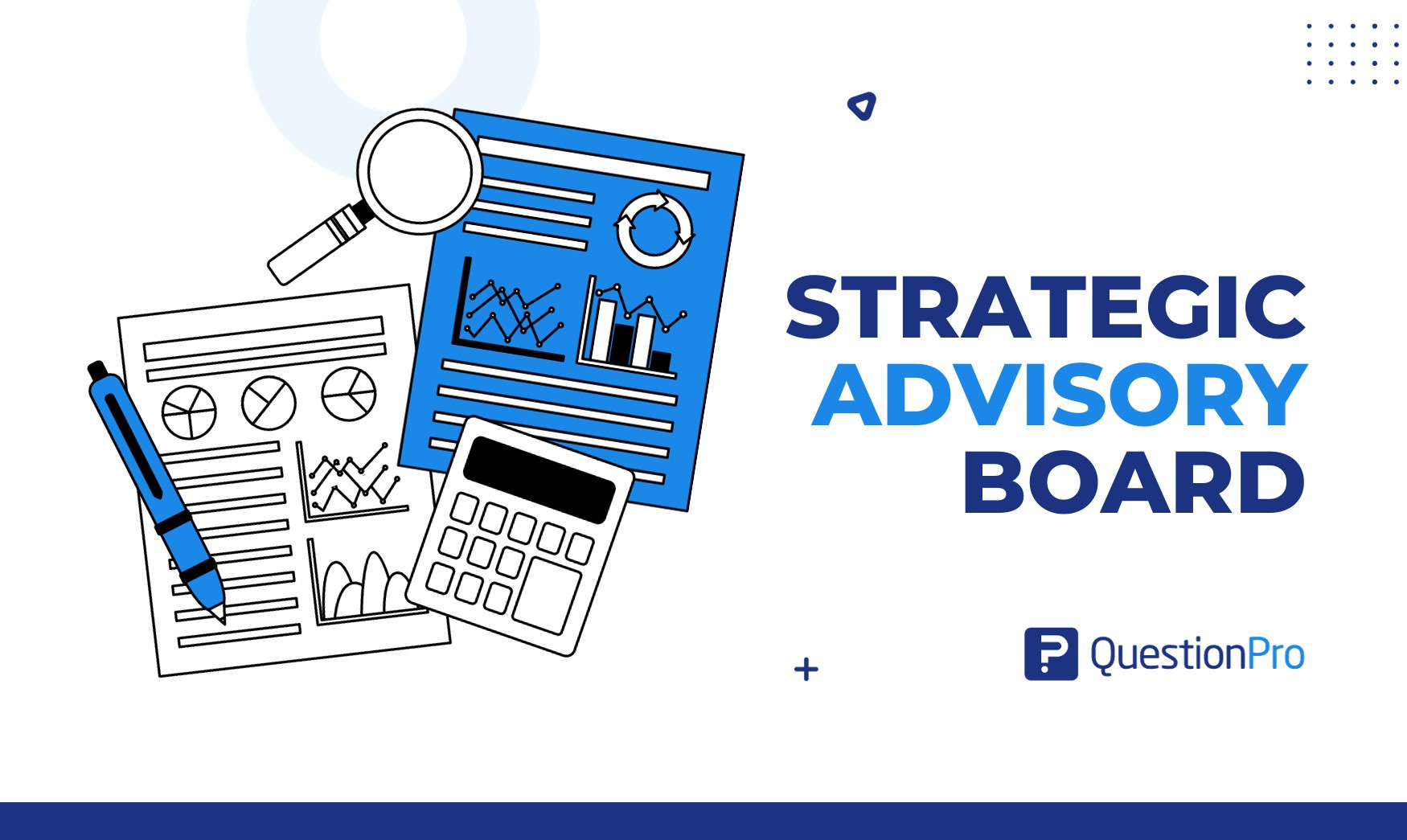
Have you ever wondered how successful businesses navigate the complexities of strategic decision-making? Enter the Strategic Advisory Board (SAB), a beacon of external wisdom and strategic insight in the intricate dance of corporate strategies.
The SAB plays a pivotal role, offering leadership teams unique perspectives and invaluable counsel. This exploration delves into the intriguing realm of the SAB, unraveling its essence, providing insights on assembling this powerhouse, and tracing its evolutionary path through the ever-shifting landscapes of business strategy.
Join us on a journey where questions lead to answers, and the strategic advisory board emerges as the compass guiding businesses toward enduring success. What is a strategic advisory board, how do you build one, and what does its evolution reveal about the ever-changing face of business? Let’s find out.
What is a Strategic Advisory Board?
A Strategic Advisory Board (SAB) is a group of external experts and professionals who guide and advise a company’s leadership team on strategic matters. Unlike a board of directors, an SAB doesn’t have fiduciary responsibilities.
However, offering diverse perspectives, industry insights, and strategic counsel is crucial. SAB members typically have deep industry knowledge, extensive experience, and a network of valuable contacts.
Core characteristics of a strategic advisory board:
- Expertise Diversity: Members should bring diverse skills, experiences, and industry knowledge.
- Objective Insight: The SAB provides an external and unbiased perspective, aiding in objective decision-making.
- Long-Term Focus: The primary role of an SAB is to guide the company’s long-term strategic goals.
Importance of Building a Strategic Advisory Board
Building a strategic advisory board can benefit organizations, particularly in providing guidance, expertise, and diverse perspectives. Here are some reasons highlighting the importance of establishing a strategic advisory board:
- Diverse Perspectives: An SAB brings together individuals with varied expertise and backgrounds, providing the company with diverse perspectives crucial for strategic decision-making.
- Industry Insight: Members of the SAB often have a deep understanding of industry trends, market dynamics, and emerging opportunities, helping the company stay ahead in a rapidly changing business owner landscape.
- Networking Opportunities: SAB members can open doors to valuable networks, partnerships, and collaborations that may not be accessible through internal channels.
- Strategic Guidance: The primary role of an SAB is to provide strategic guidance, helping the company navigate challenges, make informed decisions, and capitalize on growth opportunities.
- Risk Mitigation: The diverse experiences of SAB members can contribute to better risk assessment and mitigation strategies, enhancing the company’s resilience.
How to Build a Strategic Advisory Board?
Building a Strategic Advisory Board involves careful planning, identifying the right individuals, and establishing clear expectations. Here’s a step-by-step guide on how to make a strategic advisor board:
Define Objectives
Clearly outline the goals and objectives you aim to achieve through the strategic advisory board members. Whether it’s market expansion, innovation, or navigating industry changes, having a clear, broad focus will guide the selection of board members.
Identify Key Areas of Expertise
Identify the skills and expertise needed to address your organization’s challenges and opportunities. This could include industry knowledge, technology insights, legal expertise, etc.
Select Board Members
Identify and approach potential members based on their expertise and ability to contribute to your organization’s strategic goals. Ensure diversity in terms of background, skills, and industry experience.
Establish Clear Communication Channels
Define how communication and collaboration will occur between the SAB and the organization. Regular meetings, reports, and updates should be structured to keep the SAB informed and engaged.
Set Term Limits and Expectations
Establish clear expectations for the roles and responsibilities of SAB members. Define term limits to ensure a regular influx of fresh perspectives and expertise.
Compensation and Recognition
Determine whether SAB members will be compensated for their time and expertise. Recognition and appreciation for their contributions are essential for maintaining a positive and committed SAB.
Evolution of a Strategic Advisory Board
The evolution of a Strategic Advisory Board is a dynamic process that should adapt to an organization’s changing needs and goals. Here’s a general progression that outlines the potential stages in the evolution of a strategic advisory board:
Continuous Assessment
Regularly assess the effectiveness of the SAB in board meeting its objectives. This may involve feedback sessions, performance evaluations, and board composition adjustments.
Adapt to Changing Needs
As the organization evolves, so should the composition and focus of the SAB. Be willing to adapt and modify the board to address new challenges and opportunities.
Promote Collaboration:
Encourage collaboration between the SAB and internal teams. This can enhance the integration of external advice into the organization’s strategic decision-making processes.
Globalization and Technology
Consider the impact of globalization and technological advancements on your industry. Ensure that the SAB is equipped to provide insights into these changing landscapes.
Conclusion
A well-structured and effectively managed Strategic Advisory Board can be a powerful asset for organizations seeking to navigate the complexities of their industry and achieve long-term success.
By building a diverse and knowledgeable advisory board, setting clear expectations, and fostering collaboration, organizations can leverage the collective expertise of its members to make informed and strategic decisions. Regular evaluation and adaptation ensure that the advisory board remains a dynamic and relevant resource for the organization’s evolving needs.
QuestionPro is an invaluable ally in strategic advisory boards, offering a comprehensive suite of tools that empower organizations to make informed and strategic directions.
The platform’s robust survey and feedback capabilities enable efficient data collection, while its advanced analytics and reporting features provide deep insights into stakeholder perspectives.
By leveraging QuestionPro, strategic advisory boards can enhance their effectiveness, fostering a more collaborative and informed decision-making process. The platform’s user-friendly interface and ability to adapt to diverse business leaders’ needs position it as a versatile and powerful tool for organizations seeking to navigate the complexities of strategic planning.
In the dynamic landscape of strategic advisory, QuestionPro emerges as a facilitator of success, enabling boards to harness the collective intelligence and opinions crucial for steering organizations toward their goals.







